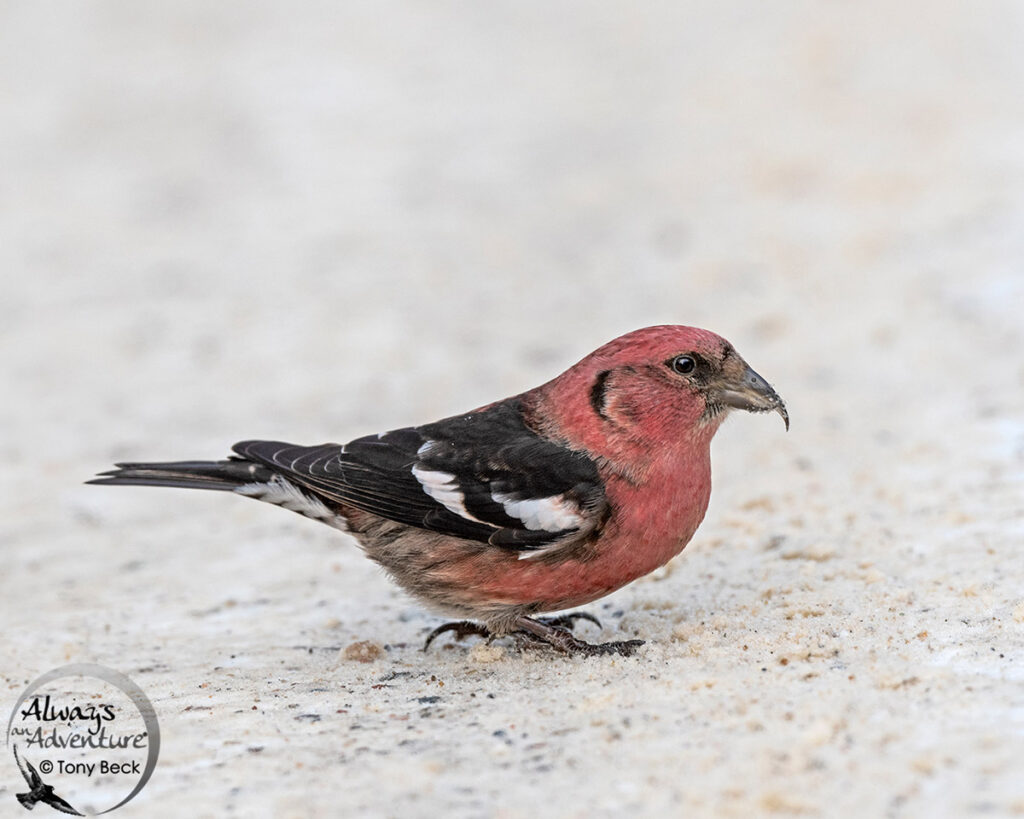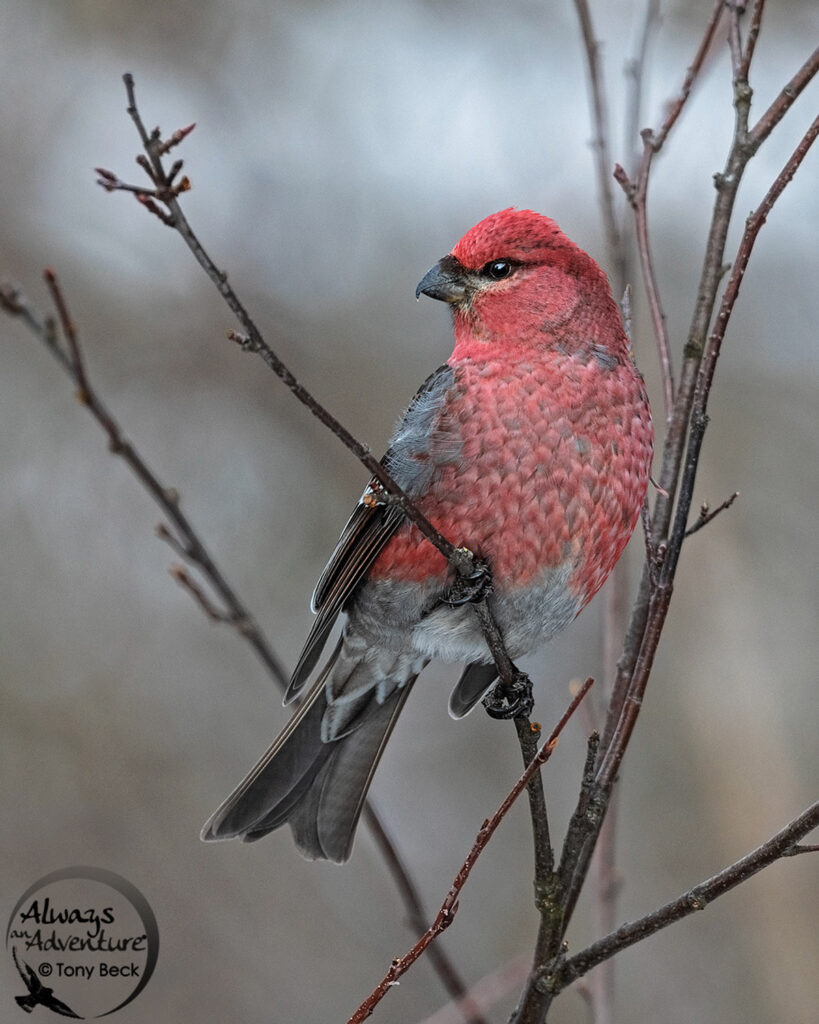
Adult male Pine Grosbeak – Algonquin Park, Ontario – A large finch that breeds in northern coniferous forests, in winter, they sometimes venture into urban gardens looking for fruiting trees and shrubs.
Winter takes its toll on wildlife. Only the most resourceful and adaptable animals survive the season’s extremes. While many animals hibernate or migrate south, others are well equipped for dealing with prolonged cold and meagre food supplies.
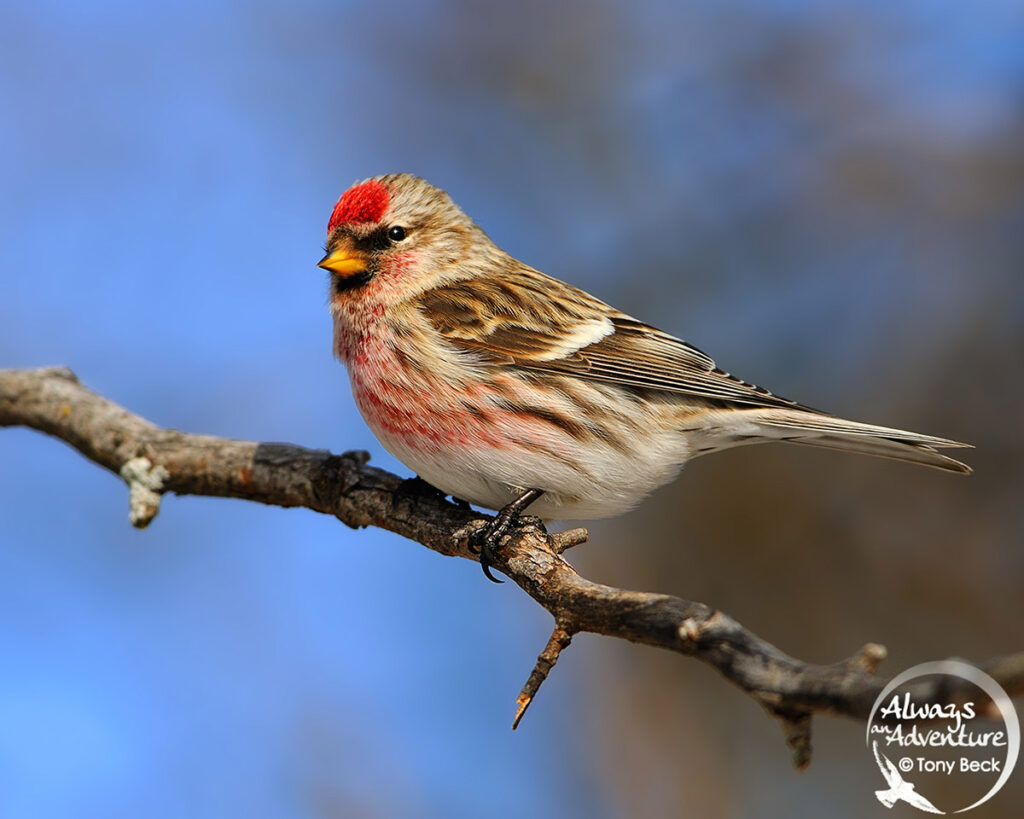
Common Redpoll – Ottawa, Ontario – A small finch of northern habitats, the Common Redpoll can sometimes form huge winter flocks as they move through urban gardens.
Among the most visible of winter’s birds are the finches – a group of songbirds that flourish throughout our country. As the autumn wanes, I look for them wandering into habitats around my home. They survive winter by feeding primarily on abundant seed and berry crops. As long as they have food, their bodies can resist the most severe of Canada’s cold snaps.
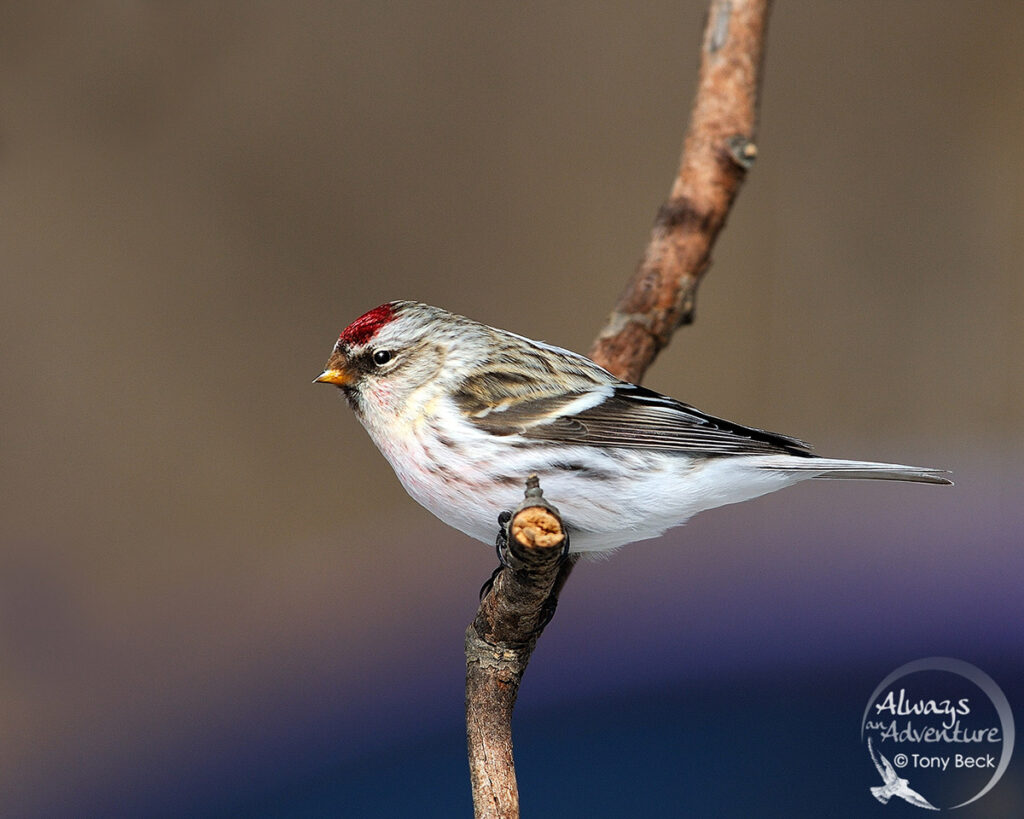
Hoary Redpoll – Ottawa, Ontario – a small finch breeding in the High Arctic, small numbers of Hoary Redpoll occasionally venture into Southern Canada. Closely related to Common Redpoll, and frequently associated with them in winter flocks, the Hoary is typically frostier-looking.
Look for these colourful creatures along forest edges, gardens, and even around urban properties. Many will visit birdfeeders, especially if they include Niger Seed and Sunflower Seed. Some of them also enjoy fruiting trees like Mountain Ash, Buckthorn or Crabapple.
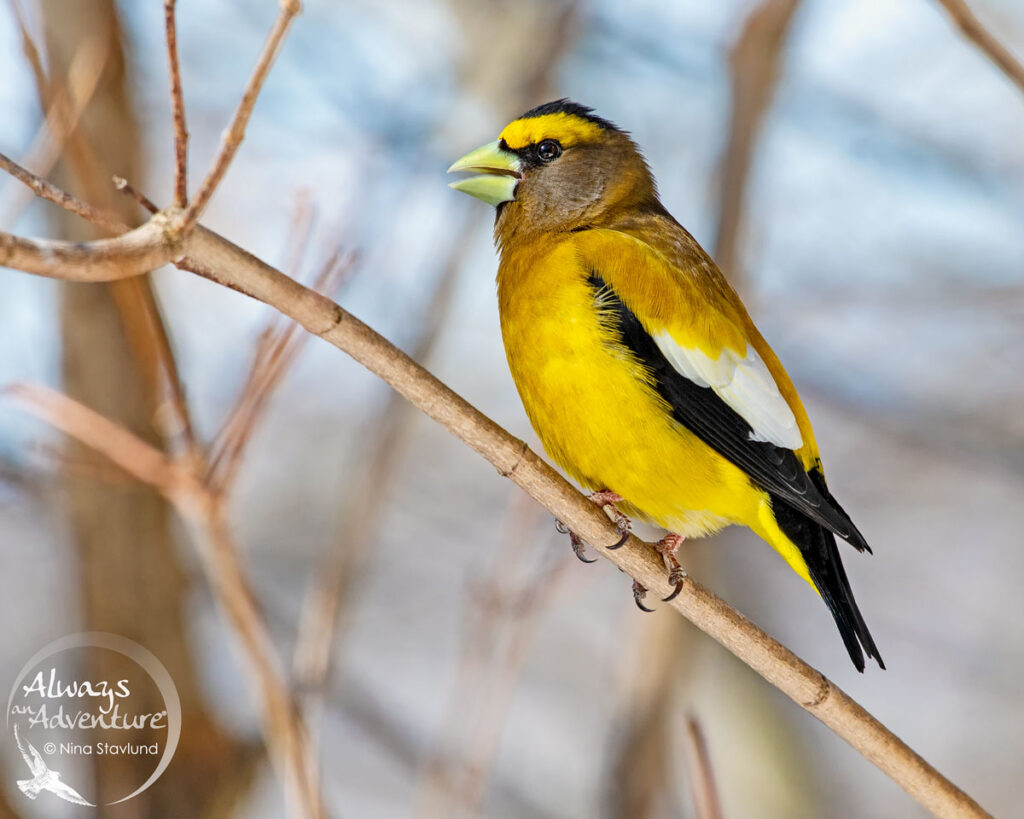
Adult male Evening Grosbeak – Many finches, like the various grosbeaks, have thick, conical bills well-suited for cracking open seeds. (Photo courtesy Nina Stavlund).
This winter, keep your telephoto poised and ready. It might be a good season for these charming and photogenic creatures.
Adult male White-winged Crossbill – Beware of birds in the road. To assist food digestion, many birds eat grit after feeding on seeds. In winter, you might find finches collecting grit left on the road after highway maintenance trucks pass by. This adult male White-winged Crossbill was photographed in the middle of a road in Gatineau Park, Quebec.
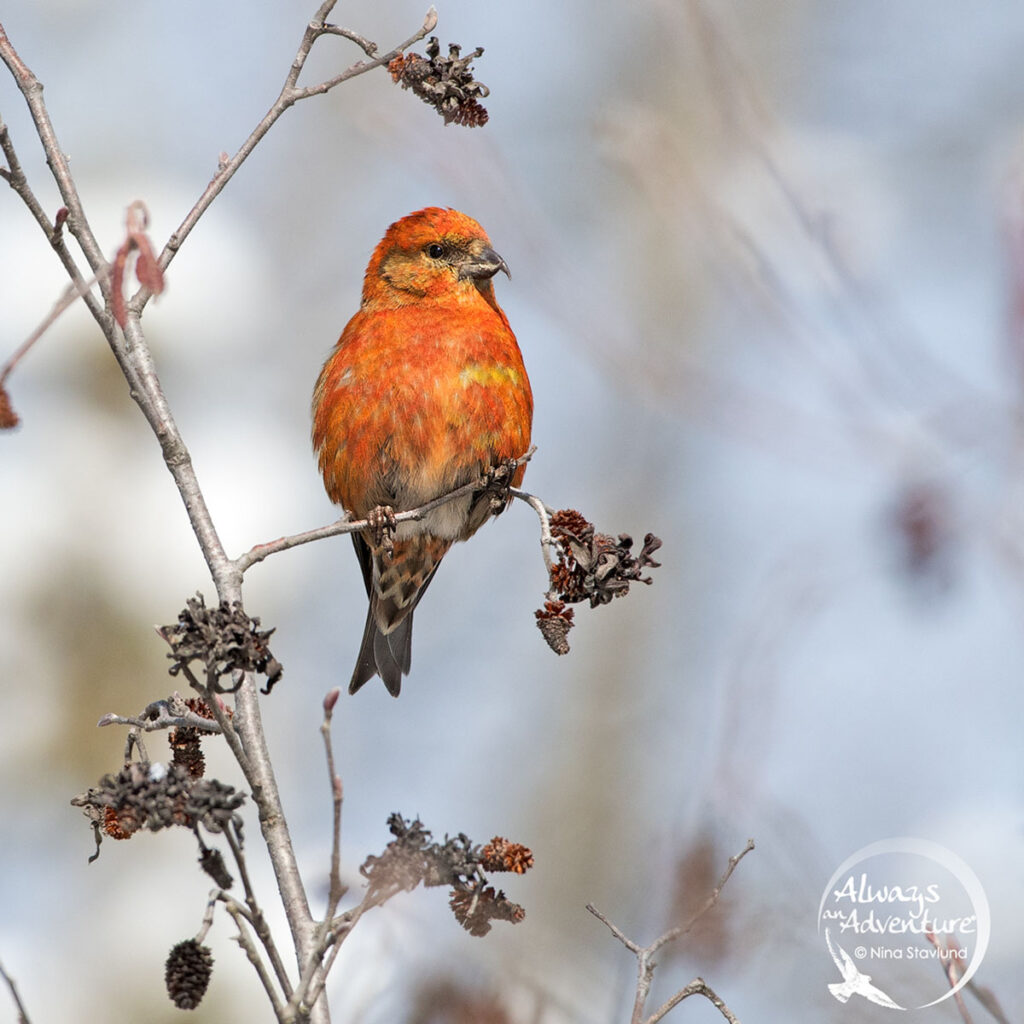
Adult male Red Crossbill – As the name suggests, Crossbills are finches that have beaks with crossed tips. They’re well adapted for extracting seeds from cones in coniferous trees (Photo courtesy Nina Stavlund).
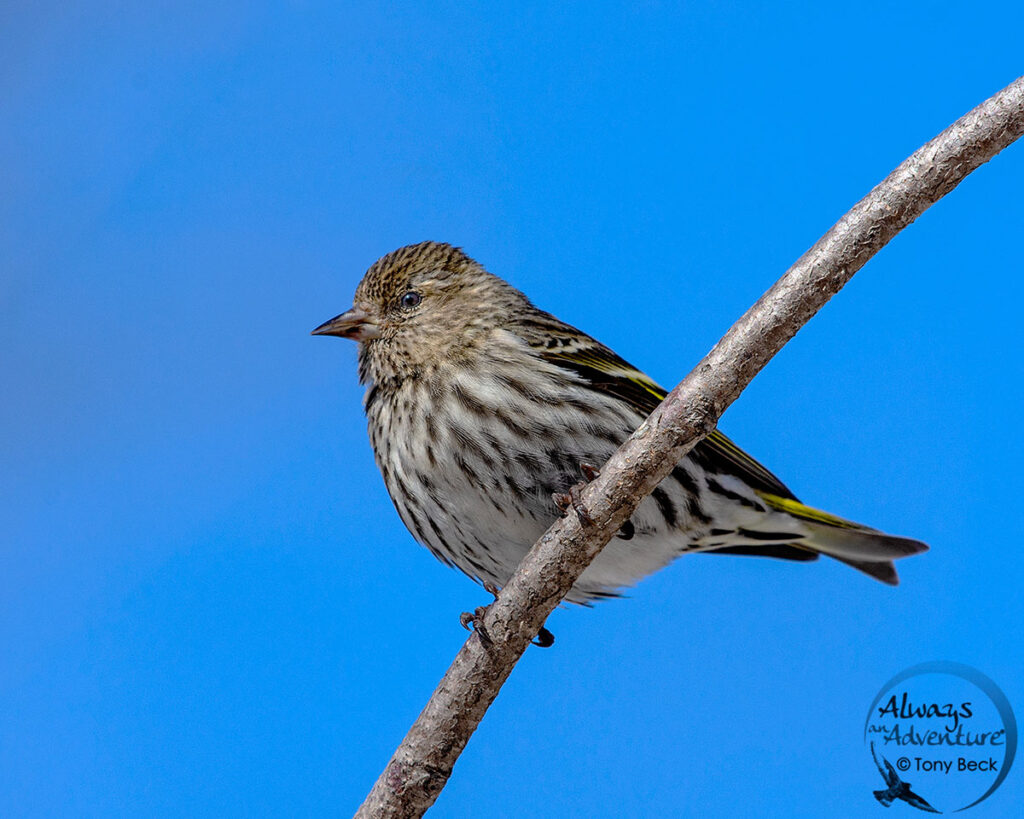
Pine Siskin – another small finch with a wide-spread range, the Pine Siskin is fairly streaky and dark with variable amounts of yellow distributed throughout its plumage.
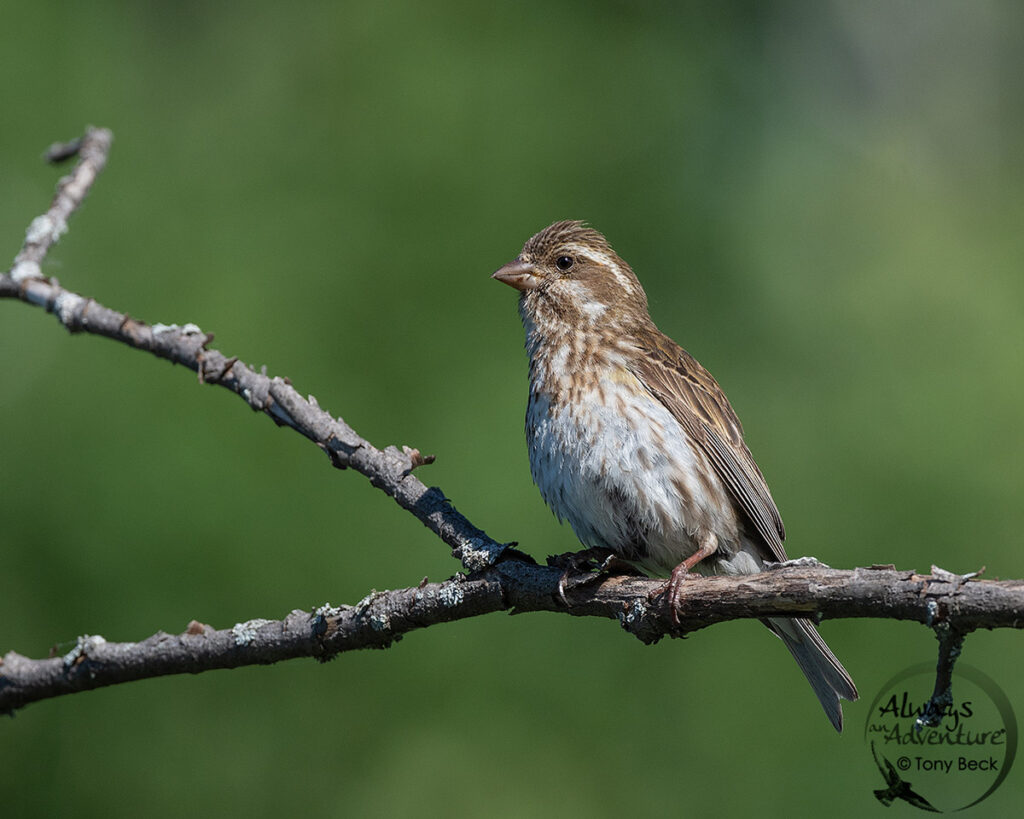
Female Purple Finch – Although not as colourful as its adult male counterpart, the female Purple Finch has a distinctive facial pattern that sets it apart from other similar species.
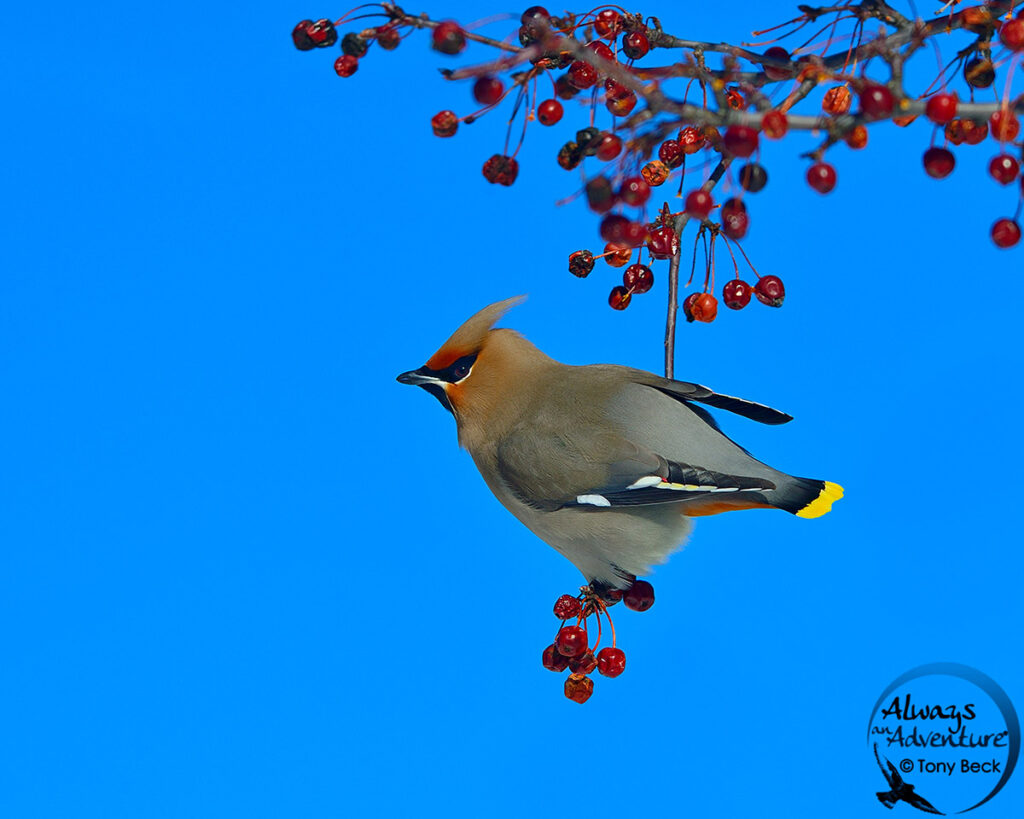
Adult Bohemian Waxwing – Ottawa, Ontario – Although not a finch, the Bohemian Waxwing is another intermittent winter visitor to Southern Canada that has similar feeding and migratory patterns as winter finches. Their winter diet mainly consists of fruits and berries.
ABOUT THE AUTHOR
Tony Beck is an award-winning, Nikon Ambassador, Vortex Ambassador, and freelance photographer based in Ottawa.
He teaches birdwatching and nature photography courses.
Follow Tony’s adventures at www.AlwaysAnAdventure.ca



